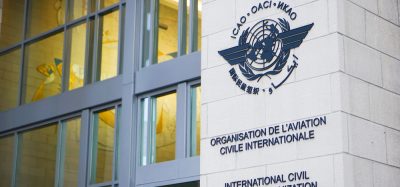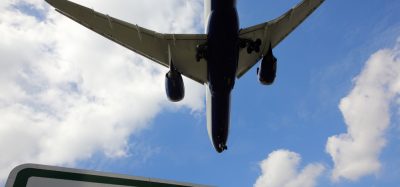The value of local runway safety teams versus technology
- Like
- Digg
- Del
- Tumblr
- VKontakte
- Buffer
- Love This
- Odnoklassniki
- Meneame
- Blogger
- Amazon
- Yahoo Mail
- Gmail
- AOL
- Newsvine
- HackerNews
- Evernote
- MySpace
- Mail.ru
- Viadeo
- Line
- Comments
- Yummly
- SMS
- Viber
- Telegram
- Subscribe
- Skype
- Facebook Messenger
- Kakao
- LiveJournal
- Yammer
- Edgar
- Fintel
- Mix
- Instapaper
- Copy Link
Posted: 5 October 2011 | Paul Wilson, Head of Air Traffic Management, EUROCONTROL and Yvonne Page, Project Manager of Runway Safety at EUROCONTROL | No comments yet
Today there are a number of diverse technologies available to aid operational staff in their work to prevent runway incursions and excursions and assure runway safety. The kinds of technologies we refer to include systems for air traffic controllers, pilots and manoeuvring area vehicle drivers and provide an alert that a runway is in use or situational guidance to those operating on the manoeuvring area.
Runway alerting systems for pilots and vehicle drivers can be extremely effective but one significant drawback is that for many runway incursions the prime causal factor is a breakdown in communication between the controller and the vehicle driver or pilot – in short they believe they have received a valid clearance to enter a runway. Likewise for controllers, their surveillance based alerting systems have, and will continue to, save many serious incidents – however the alerting time on occasions can be very brief – almost too brief for any effective action to be taken. Consider the situation where a pilot, for whatever reason, crosses a runway holding point and starts moving towards the runway, he will get to the edge of the runway in seconds. In that time the system will need to detect the situation – alert the controller. The controller needs to work out from the display where the incident is and what the best course or recovery action is – and remember he may well be very busy. The situation and avoiding action needs to be conveyed to a pilot who needs to understand what is being said and react accordingly – clearly this could be very difficult in just a few seconds.
Today there are a number of diverse technologies available to aid operational staff in their work to prevent runway incursions and excursions and assure runway safety. The kinds of technologies we refer to include systems for air traffic controllers, pilots and manoeuvring area vehicle drivers and provide an alert that a runway is in use or situational guidance to those operating on the manoeuvring area.
Runway alerting systems for pilots and vehicle drivers can be extremely effective but one significant drawback is that for many runway incursions the prime causal factor is a breakdown in communication between the controller and the vehicle driver or pilot – in short they believe they have received a valid clearance to enter a runway. Likewise for controllers, their surveillance based alerting systems have, and will continue to, save many serious incidents – however the alerting time on occasions can be very brief – almost too brief for any effective action to be taken. Consider the situation where a pilot, for whatever reason, crosses a runway holding point and starts moving towards the runway, he will get to the edge of the runway in seconds. In that time the system will need to detect the situation – alert the controller. The controller needs to work out from the display where the incident is and what the best course or recovery action is – and remember he may well be very busy. The situation and avoiding action needs to be conveyed to a pilot who needs to understand what is being said and react accordingly – clearly this could be very difficult in just a few seconds.
Is technology the guaranteed solution to preventing runway accidents – in the same way that TCAS provides the safety assurance to aircraft en-route? Should any system be predicated upon safety nets to ensure safety? The answer to both is no, so how can the safety of runway operations be maintained or even enhanced – what else needs to be in place to make this happen? From a global perspective, we need consistency in operations based upon the uniform application of ICAO provisions. It is important that the same procedures and techniques are used no matter where a pilot is flying to – otherwise inevitably there could be ambiguity and the potential for confusion.
Even with this however, there remains one other significant issue that must be addressed. It is a fact that all airports are different – there are different infrastructure and runway layouts and of course to go with this different problem areas – most airports for example have at least one difficult or complex area where taxiways cross a runway and which maybe has been involved in a higher than average number of incidents. Only the local runway safety team using their collective knowledge which includes inputs from the aerodrome controllers and importantly, those who use the intersection, know the real problem. Likewise they understand the problems of communication breakdowns and know what the solutions are. It is a fact that what is used in practice may vary slightly from the ICAO standards – but it is important to note that even minute variations may result in incorrect interpretations. It is areas like these where local runway safety teams have demonstrated their effectiveness in addressing local issues in the global context.
To summarise, runway operations can be difficult and complex. To ensure the highest levels of safety are maintained it is essential that local runway safety teams are in place to address local issues. Having said that, recognition is given to safety nets and some of the technology used to assist operational staff by enhancing situational awareness, and in pro – viding an alert when something does go wrong.
There is no silver bullet for guaranteeing absolutely safe runway operations – but with the elements in place mentioned in this article we have seen a year on year reduction in the numbers of serious runway incidents that have taken place.
Turning to runway excursions, the data shows that for more than 20 years the rate of runway excursions has not declined. Unlike runway incursions, runway excursions typically generate an accident or serious incident and so a formal investigation is conducted and a report issued detailing the causal and contributory factors.
There are four categories of excursion, a landing overrun, a landing veer off the side of a runway, a take off overrun and a take off veer off. Runway excursions on landing are the most common type of occurrence, accounting for approximately 80 per cent of the total number.
In recent years EUROCONTROL has been involved in work to better understand how excursions happen and together with the European Working Group for Runway Excursion Prevention determined some important facts to be considered.
The most common causes of a runway excursion include:
- Wet/contaminated runway
- Strong cross/tail wind
- Landing long
- Late application of all stopping devices
- Incorrect decision to land
- Incorrect decision to abort a take off
Some of these causes do occur in combination when an aircraft is involved in a runway excursion e.g. landing long, strong wind and a wet or contaminated runway.
By working with aircraft manufacturers, aircraft operators and pilots the group has established the best courses of action for pilots to take to avoid a runway excursion.
Best practices often lead us back to ICAO provisions and the correct use of the appropriate standard or recommended practice. Weather cannot be controlled, but making sure the runway is correctly constructed and friction levels are maintained to a high standard is essential. Executing a missed approach if things are not as they should be is the right thing to do.
Guidance for air traffic controllers on how to avoid bringing an aircraft onto the approach too high has been developed by CANSO and will be disseminated widely.
The importance of robust procedures for the assessment of weather, and runway surface conditions is reinforced by Airports Council International and the European Action Plan to prevent runway excursions will also be disseminated widely in 2012.
More information on Local Runway Safety Teams can be found in the EAPRI2 – and some of the benefits include:
- Knowledge of local operational issues
- Helping to ensure the consistent application of ICAO provisions
- Starting up team work in a practical way
- Multi-disciplinary view of problems and their potential solutions
The European Action Plan for the Prevention of Runway Incursions is now available from www.eurocontrol.int/runwaysafety or contact [email protected]
About the Authors
Mr Paul Wilson is both a former air traffic controller and pilot. After working as a controller at London Heathrow Airport for 15 years, he worked at the HQ of the National Air Traffic Services on measures intended to enhance safety and capacity. Following a period as Head of Air Traffic Control at Heathrow, a move was made to EUROCONTROL as Head of the Airport Unit. One of the most important projects was Runway Safety – and Paul led on the production of the European Action Plan for the Prevention of Runway Incursions, a document that has been subsequently adopted in several regions of the world. Considerable support on Runway Safety was provided to ICAO with full participation at several international seminars. In conjunction with the FAA and Air Services Australia the ICAO manual on Runway Safety was produced.
Yvonne Page is the Project Manager for Runway Safety at EUROCONTROL where she has worked since 1995. Yvonne’s professional background is in Safety and Quality Management. She is a qualified Project Manager and also holds a Masters Degree in Business Administration. Yvonne is of British nationality and lives in Brussels. Her primary objectives include raising awareness of runway safety issues such as runway incursion and excursion prevention. An important achievement of the runway safety project has been the establishment of local runway safety teams across Europe.
















